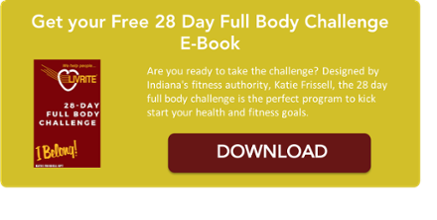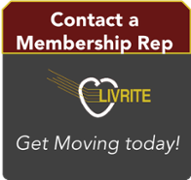Cardio or Weights: Which is Better For Weight Loss?
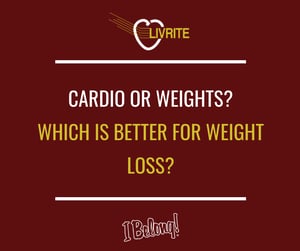
If you are looking to lose some weight you might be wondering what is the fastest and best way to get rid of fat. At the very basic level, to lose weight you need to create a calorie deficit. That is, to burn more calories than you are taking in. Of course, there are many things that can complicate that simple (but not easy to do) equation. Those complications aside, and not taking your nutrition into account, what is the best way to exercise to burn more calories and lose weight? Cardio or Weight Training?
Cardio, like running, the elliptical, brisk walking, a Zumba class or spinning, is great for your heart and does burn more calories per minute than resistance training while you are completing the exercise. The amount of calories expended depends on the type, intensity and duration of the exercise. Keeping your heart rate elevated at a consistent level is called steady state cardio (for example, walking at the same brisk pace for 30 minutes). Varying the intensity of your cardio (for example, sprinting for 1 minute then jogging for 2 minutes) in high intensity intervals (HIT) burns more calories than steady state cardio and does create more calorie burn for up to 24 hours after you exercise due to your body recovering from the high intensity intervals.
Resistance training with weights is important for building and maintaining muscle and bone mass. The more muscle you have, the higher your metabolic rate overall. That means you will burn more calories all the time with more muscle! Also, you will continue to burn calories after a strength training session. With steady state cardio, your calorie burn ends with the exercise. This afterburn created by weight training is due to your body repairing the microscopic muscle tears that happen when you challenge your muscles with weights. These tears will repair and that is how your muscles get stronger.
Which is better for weight loss? It’s a close call, but weights edge out cardio for weight loss when you look at the metabolic effects that occur after weight training. According to a study in the Journal of Science and Medicine in Sport (2017; doi:10.1016/j.sams.2018.02.010), even when a cardio and weight training session burnt the same amount of calories, the group who worked out with the weights had more metabolic effects that could influence long term training results.
For the best results, do both! Both weight training and cardio exercise are important for your overall health. Either combine your cardio and strength training in intervals or complete your strength training then get your cardio in for optimal calorie burn. Choosing the type of these workouts depends on your fitness level and which you like doing. The exercise that will burn the most calories is the one that you will do on a consistent basis!
Have questions about how to plan your workouts for optimal weight loss? Contact a LivRite trainer today!
Looking for great weight training workouts? Take a look at our exercises library for instructional videos.
Topics: LivRite News, Workouts
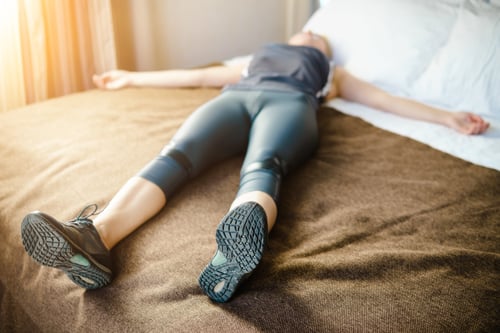
I hope fitness is a habit for you and you are working out almost every day. Notice I said almost every day? Rest days are an important part of your fitness program.
When strength training you are actually creating microscopic tears in your muscles and as they rebuild they get stronger. This happens 24-48 hours after you work that muscle group and is why you shouldn't work the same muscle group with any type of resistance on back to back days. You can work different muscle groups on different days to help with muscle recovery. For example, upper body one day and legs the next.
Rest days are still important even when splitting up days to weight train muscle groups. Exercise, especially higher intensity workouts, are taxing on your body and deplete your glycogen stores which you use for energy. In order to keep progressing, and reduce your likelihood of injury, you need to give your body a break once and awhile to repair and re-energize.
How often should you rest? In general, if you are starting out with a new exercise program or are a beginner exerciser, rest every third day (that is, exercise two consecutive days and rest the third). More experienced exercisers should remain inactive or take an active recovery day once a week.
What does a rest day look like? How inactive you are on your rest day depends on the intensity of your workouts leading up to it. For example, if you are killing it in the gym day in and day out, your rest day should be a day completely off, maybe go for a walk, but no gym or workout video. However, if your workouts have been light to moderate intensity all week, you can take a more active recovery day. That might include playing a sport outside, taking a yoga class, or going for a longer walk.
Build a rest day in your schedule! They allow your muscles to get stronger, replenish your glycogen stores, reduce the risk of overuse injuries, avoid mental burnout and help your body repair itself.
Topics: LivRite News
Is Muscle Soreness After a workout An Indicator of A Good Workout?
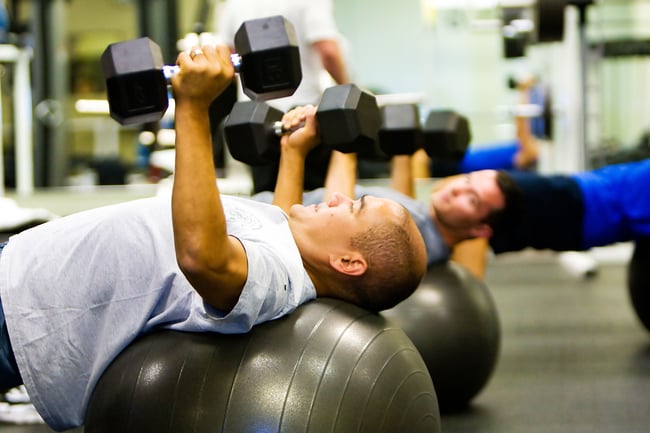
People always tell me if they were sore after a personal training session or group class. Many post on social media about how sore they were after their workout. There are memes all over the Internet about not being able to walk after leg day. It is almost like a badge of honor for some, but is soreness an indicator of a good workout? Is a workout still effective if you aren’t sore the next day?
In short, yes, your workout is still effective even if you aren’t sore! When you first start a new workout, your muscles are not used to the challenge and you will probably feel it the next day or so. However, after a period of completing those exercises, your body adapts to the movements and you most likely don’t feel soreness. Muscle soreness is just telling you that you changed something, overdid it, or did something your body wasn’t used to. So how do you know if you are getting results if you aren’t sore? By measuring your progress in other ways such as a workout log, measurements, pictures or by how you feel. So how do you get that progression without being sore?
To improve your strength and overall fitness you must progress your routine. Doing the exact same thing over and over for months won’t result in improvement after a period of time. Your body will adapt to your movements and needs a change every few months to challenge your muscles. You can do this by altering your exercises, increasing your weight and/or changing the number of repetitions you do. Some slight soreness is expected after you first make these adjustments, however, excessive soreness may occur when you make too large of an increase. For example, if you have been using a 5 lb weight for bicep curls for weeks and then start using 15 lbs.. Or if you have never run over 2 miles at a time but go and run a half marathon (13.1 miles). Without slowly increasing your weight or your miles in these examples, you are going to be super sore and are risking injury. Gradually making adjustments to your fitness routine will challenge your body but will only result in possible minor soreness right after you make those changes. You can progress effectively without intense discomfort.
Some muscle soreness is normal after making a change to your routine. However, it shouldn’t be all of the time and doesn’t have to be extreme. Don’t use soreness as an indicator of a good workout. Measure your results by using a workout log, measurements, pictures or by how you feel. The key is to gradually and sensibly progress your workouts. This can be done by understanding your current levels of fitness and strength and applying small and frequent increases in intensities or volume according to where you are now. You can avoid muscle soreness and still achieve great results.
Topics: LivRite News, Workouts
5 Tips To Make it Easier to Work Out in The Morning
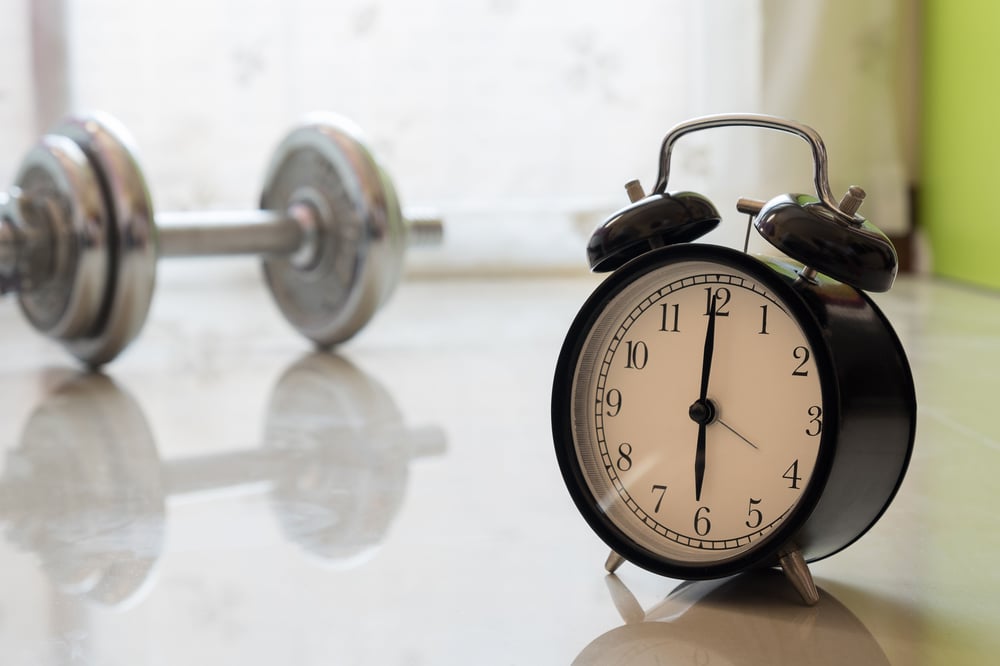
There are many benefits to morning exercise. The gym is less crowded, you’ll have more free time in the evening (and be less likely to cancel due to after work plans), plus you’ll be more focused and have more energy the rest of the day. One study suggests it will help you better manage cravings and eat healthier throughout the rest of the day.
It can be tough to wake up early enough to get that workout in before work or school. Not everyone is a natural born early riser but there are ways to make it a little easier to make a morning exercise habit.
1. Get enough sleep- Experts recommend 7-8 hours of sleep each night. Have a good bedtime routine to get to sleep as early as you need to in order to get adequate rest. Limit cell phone, computer, and TV use before you go to sleep so the blue light they emit doesn’t affect your slumber. If you are properly rested, it is easier to get up for that early workout.
2. Get everything ready the night before– The less you have to think about after the alarm goes off, the better. Set out your clothes the night before (or sleep in your workout clothes). Set a quick light breakfast and full water bottle out to take with you to the gym. Make it as easy as possible to start that workout (plus you can sleep longer!).
3. Get something to look forward to– Excitement will help you get up and at ‘em. It can be something simple like a new playlist or podcast to listen to during your walk, run or strength training. Find a group class that you really enjoy, or look forward to talking with a friend that you are meeting to exercise together.
4. Get a workout buddy– You will be much less likely to sleep in and skip that workout if someone is waiting for you. Plus socializing with that friend will make your workout more enjoyable (see #3).
5. Get an Intention– If you are going to wake up early to work out, giving yourself a good reason to do it could make it feel a little easier. Think about why you are making this choice. For example, “I’m waking up early to exercise so I can come right home after work and spend more time with my kids.” Or “I want to get my workout done early so I will feel better throughout the day and be more focused for work.” Or “I’m getting my workout done for the day now before life gets in the way and I am tempted to cancel.” Make sure you know your why and write it down. Go back and read your intention whenever you need motivation to get up and workout when that alarm goes off.
Ready to take control of your mornings? I teach a 6 AM morning workout class on Monday's and Wednesday's at LivRite Fitness Noblesville and would love to be apart of your morning routine.
LivRite Fitness has Personal Training available at all their locations. Schedule a free fitness assessment today!
Topics: LivRite News
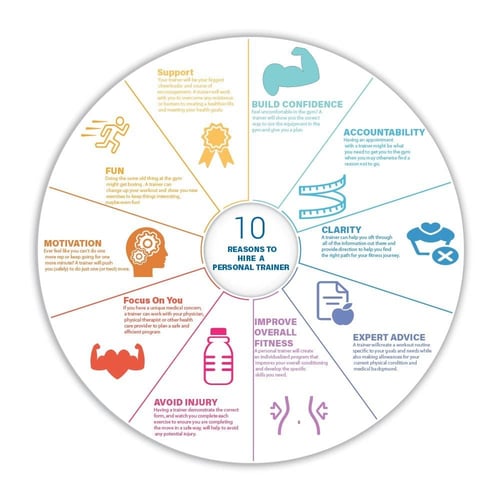
Are you wondering " Should I hire a personal trainer ?" Working with a personal trainer is one of the most successful ways to improve your health and fitness. Personal trainers are used by people of all fitness, age and economic levels to help make lifestyle changes not easily achieved by themselves. A 2014 study in the Journal of Strength and Conditioning Research found those who used a trainer had greater improvements in their lean body mass, and other measures of health related fitness, than those who completed self-directed training.
Consider the following benefits of hiring a personal trainer:
1. Build Confidence- Feel uncomfortable in the gym? Don’t know how to use all the machines? A trainer will show you the correct way to use equipment in the gym and give you a plan.
2. Accountability– Do you find it difficult to keep working out consistently? Having an appointment with a trainer might be what you need to get you to the gym when you may otherwise find a reason not to go.
3. Clarity– Fitness and nutrition can be very confusing. Every day seems to bring a new diet or workout trend. A trainer can help you sift through all of the information out there and provide direction to help you find the right path for your fitness journey.
4. Expert Workout Advice– A personal trainer will help you define achievable goals and plan how to meet them. They will create a workout routine specific to your goals and needs while also making allowances for your current physical condition and medical background.
5. Improve Overall Fitness- A personal trainer will create an individualized program that improves your overall conditioning and develop the specific skills you need. They will monitor your progress and fine-tune your program as you go, ensuring your progress and helping you work your way off plateaus.
6. Avoid Injury– Having a trainer demonstrate the correct form, and watch you complete each exercise to ensure you are completing the move in a safe way, will help to avoid any potential injury. Also, your trainer will plan your workouts to maximize the benefits and reduce the possibility of injury or overtraining.
7. Focus On You- If you have a unique medical concern, a trainer can work with your physician, physical therapist or other health care provider to plan a safe and efficient program that will speed your recovery or enable you to reach your health goals.
8. Motivation– Ever feel like you can’t do one more rep or keep going for one more minute? A trainer will push you (safely) to do just one (or two!) more.
9. Fun – Doing the same old thing at the gym might get boring (and may prevent you from reaching your goals). A trainer can change up your workout and show you new exercises to keep things interesting, maybe even fun!
10. Support– Your trainer will be your biggest cheerleader and source of encouragement. I know most trainers became certified for the same reason I did, because we want you to succeed in meeting your goals and live a happy and healthy life. A trainer will work with you to overcome any resistance or barriers to creating a healthier life and meeting your health goals.
Thinking about working with a personal trainer? Have questions? Sign up for your free fitness assessment today!
Topics: LivRite News

